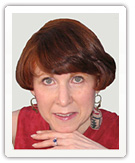e-Tips
Getting Sharper About Non-Verbal Cues
Neuroscience, psychology, and technology innovation often provide wonderful - excuse the pun - mind-boggling applications. The Herman Trend Alert reports that the (Massachusetts Institute of Technology) MIT Media Lab has developed special glasses using a built-in camera linked to software that analyses facial micro-expressions. The attached earpiece whispers the true interpretation of the emotion into one’s ear. The camera tracks 24 “feature points” on your conversation partner’s face. It analyses how often the micro-expressions appear and for how long. The data collected is automatically compared with its bank of known expressions.
MIT researchers Picard and el Kaliouby calibrated their prototype and found that the average person was only able to interpret 54% of the 24 expressions on real (that is, not acting) faces correctly. The MIT software did better, identifying 64% of the expressions. That may not seem like a huge difference, but given technological progress, I suppose we can assume the accuracy will get even better. The July issue of “New Scientist” Magazine has more on this topic.
Think how MIT’s glasses and similar products and applications can change how we interact with each other. Reducing the instances of misinterpreted emotions, people can avoid many social disasters and help all of us to understand each other better.
One use already implemented by some companies giving their employees these technologies is improved customer communication. But so much more is possible. Think also about courtroom applications and also possible legal challenges to usage. Think about negotiations. Think more transparency in the workplace and in relations between parents and children.
So we are acquiring tech tools to interpret non-verbal cues, but they aren’t of any use if you are not face-to-face. Texting and other electronic media without a video component won’t provide the advantage, a concern I have expressed frequently.
Given that video applications are among the fastest growing and most popular forms of media, we may not have to worry about disuse. Perhaps these innovations will persuade the younger generations of the importance of non-verbal communication cues to their work and personal lives.
Please send your thoughts on these observations to me at pwhaserot@pdcounsel.com or comment on www.nextgeneration-nextdestination.com. What has caused you to question or think about observed practices and behaviors differently?
Phyllis
© Phyllis Weiss Haserot, 2011.
* The generational chronology for easy reference: Generations are defined by the similar formative influences – social, cultural, political, economic – that existed as the individuals of particular birth cohorts were in adolescent-early adult years. Given that premise, the age breakdowns for each of the four generations currently in the workplace are approximately:
Traditionalists: born 1925-1942
Baby Boomers born 1943-1962
Generation X born 1963-1978
Generation Y/Millennials born 1979-1998
Phyllis is available to speak at your organization or at firm retreats on inter-generational relations and organizational effectiveness topics. Call 212-593-1549 or e-mail pwhaserot@pdcounsel.com for a list of topics or to custom-tailor your own.
Check out *Next Generation, Next Destination*, our blog about succession and multi-generational talent management. Visit, comment and subscribe by RSS feed or e-mail. http://www.nextgeneration-nextdestination.com.

